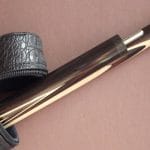Your turbocharged truck depends on precise turbo control for peak performance. The turbo actuator plays a critical role in this system, regulating boost pressure by controlling the wastegate or variable geometry components. When this component fails, you’ll notice the symptoms quickly. Read on to learn how to tell when your turbo actuator has gone bad so you can save money and prevent more extensive engine damage.
Loss of Power and Poor Acceleration
The most obvious sign of actuator failure is reduced power output. Your truck feels sluggish during acceleration, especially when pulling heavy loads or climbing hills.
The turbo may still spool up, but it won’t reach optimal boost levels. This happens because the actuator can’t properly control the wastegate position, allowing exhaust gases to bypass the turbine wheel prematurely.
Unusual Boost Pressure Readings
Check your boost gauge regularly if you have one installed. A failing actuator creates erratic boost patterns that don’t match normal operation.
You might see boost pressure that builds too slowly, peaks below normal levels, or fluctuates unexpectedly during steady throttle input. Some trucks display underboost or overboost codes when the actuator malfunctions.
Strange Noises From the Turbo
Listen for new sounds coming from your turbo area. A bad actuator often produces clicking, rattling, or grinding noises as internal components wear out.
These sounds typically occur during boost buildup or when the engine transitions between different load conditions. The noises result from the actuator arm binding, sticking, or moving erratically.
Check Engine Light and Error Codes
Modern trucks monitor turbo performance through multiple sensors. When the actuator fails, the engine control module detects the problem and triggers warning lights.
Common codes include P0234 (turbocharger overboost), P0299 (turbocharger underboost), and manufacturer-specific codes. When it comes to the Cummins turbo actuator code, you’ll find that P0237 and P2563 are frequently reported issues.
Physical Inspection Signs
Pop the hood and examine the actuator assembly visually. Look for obvious damage like cracked vacuum lines, corroded connections, or oil leaks around the actuator housing.
The actuator arm should move smoothly when you apply vacuum manually (engine off). Binding, excessive play, or a complete lack of movement indicates internal damage.
When your turbo actuator has gone bad, it should be easy to tell. Don’t ignore the symptoms. A failed turbo actuator puts additional stress on your entire turbo system and can cause catastrophic turbo failure. Most actuators are replaceable without removing the entire turbocharger, making repair relatively straightforward for experienced mechanics.







